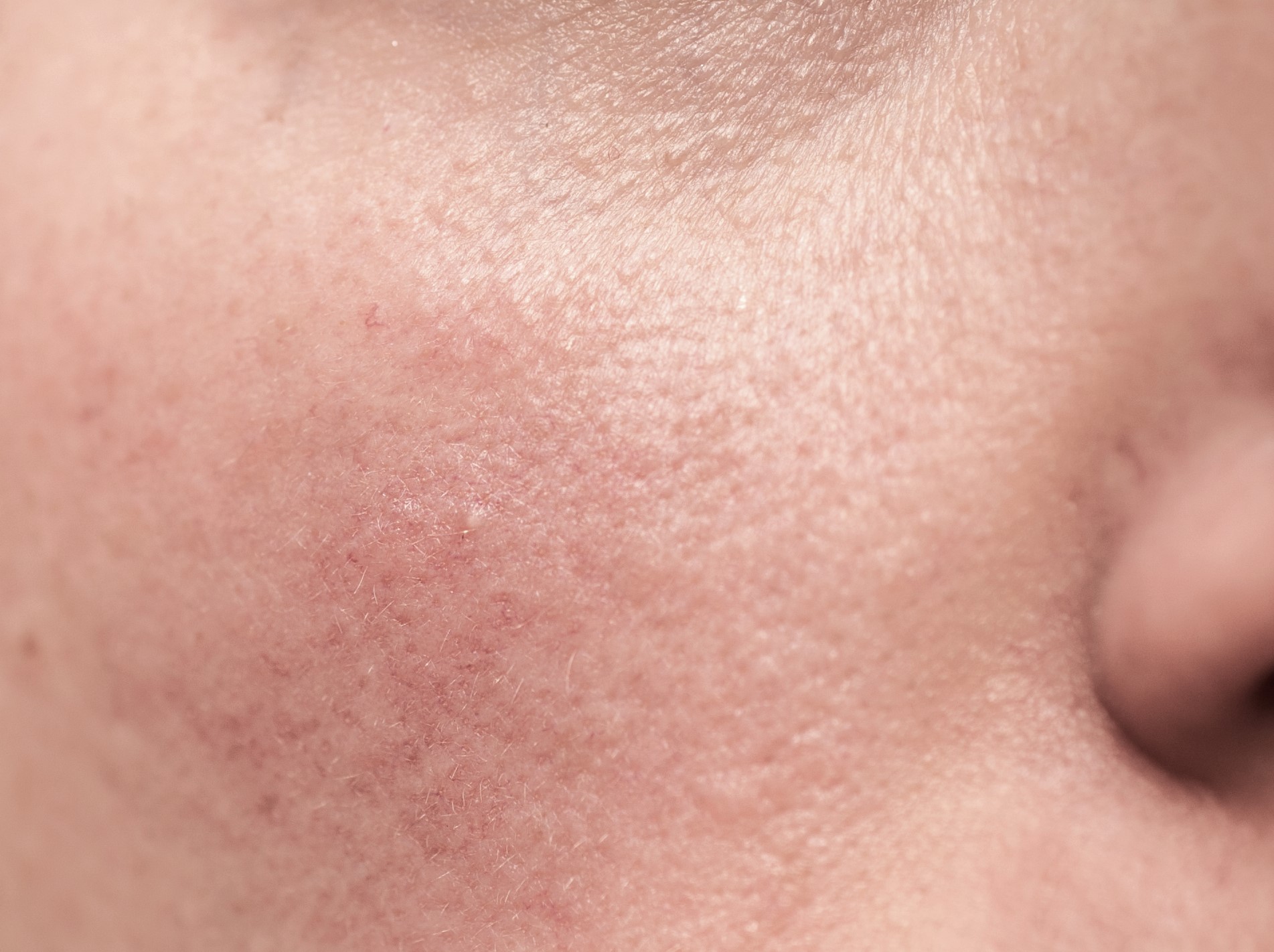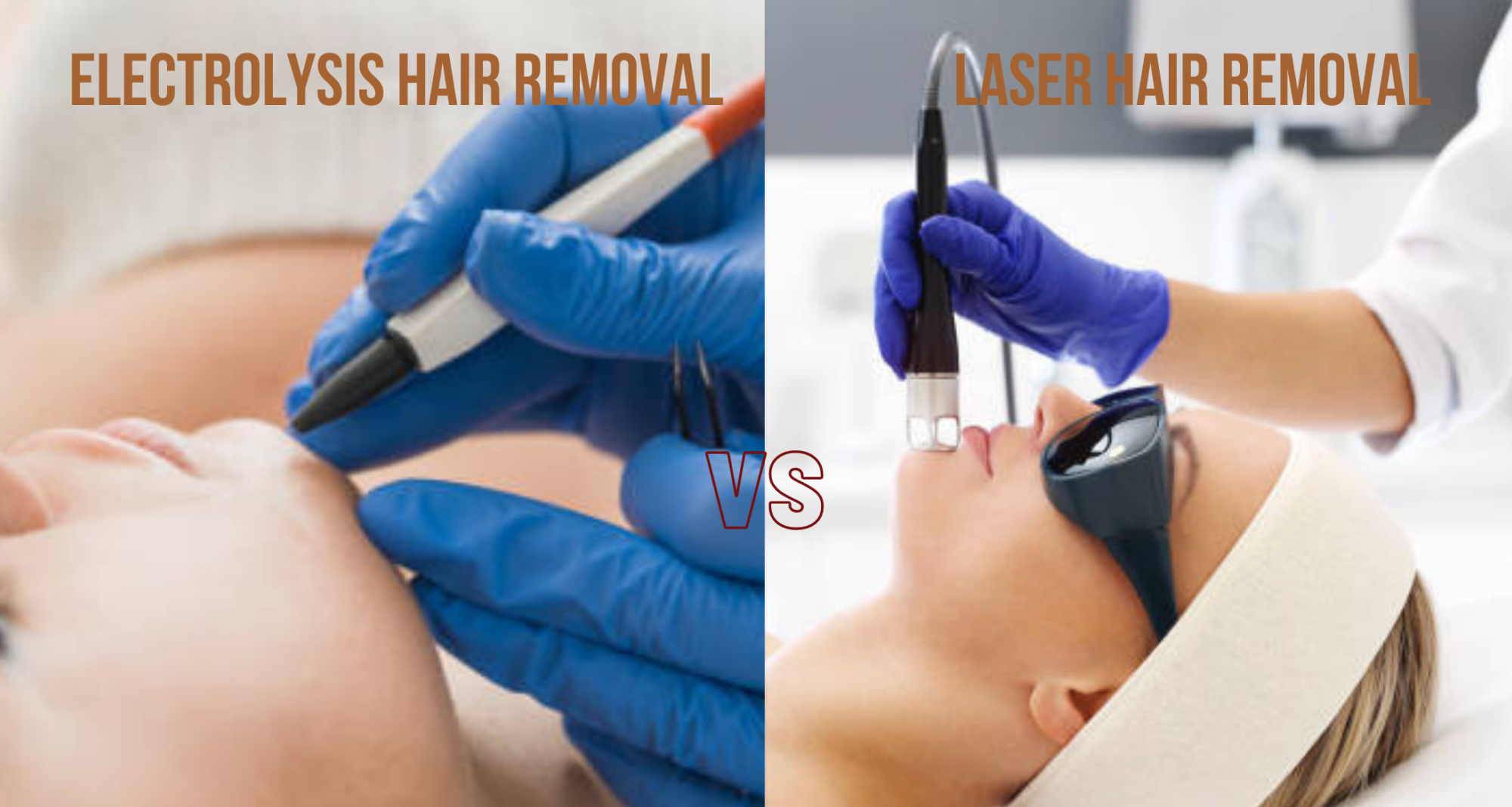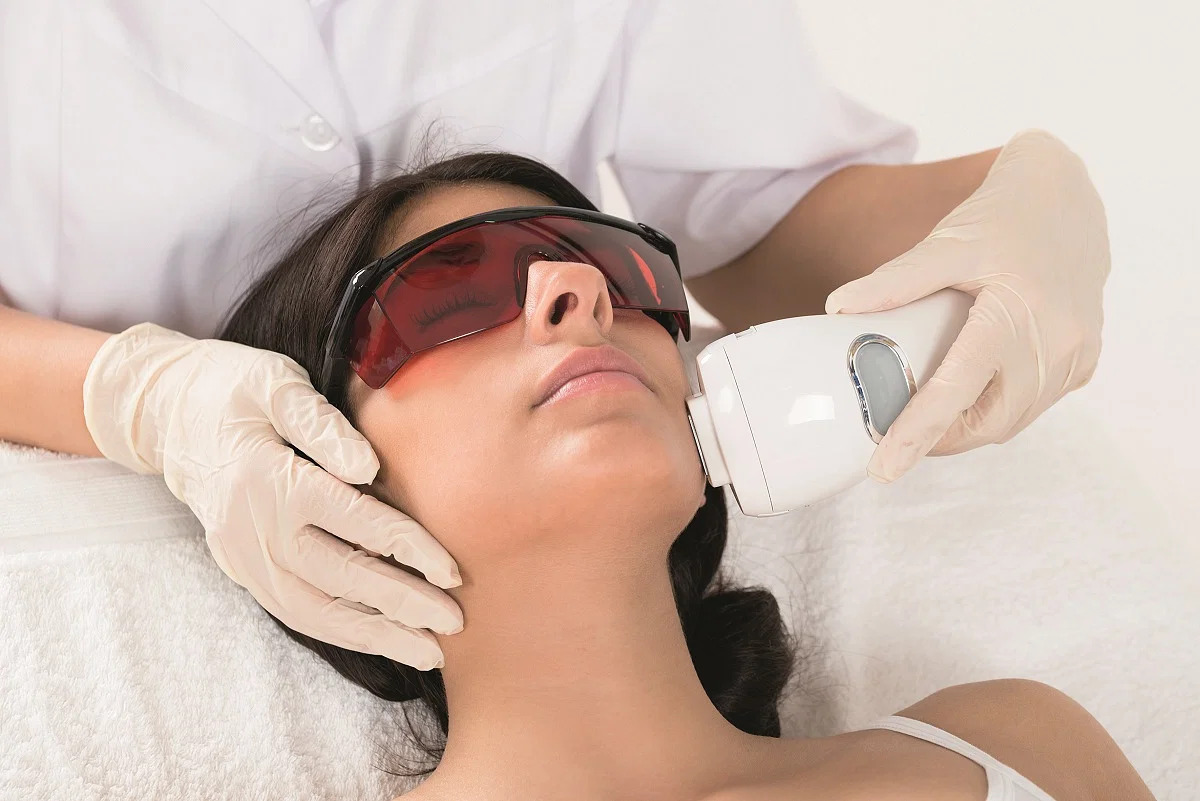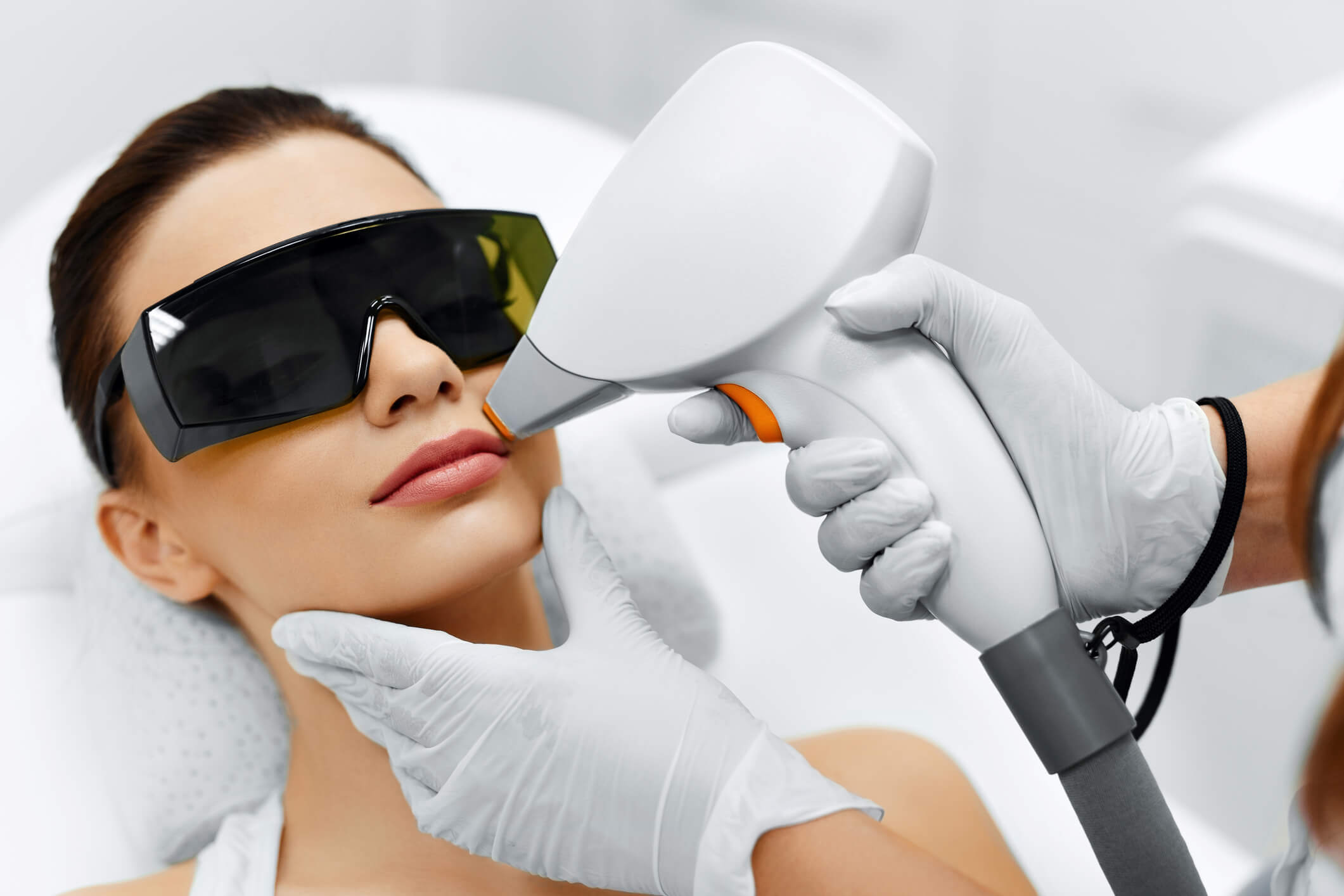Home>Buying Guides>What Type Of Laser Is Best For Hair Removal
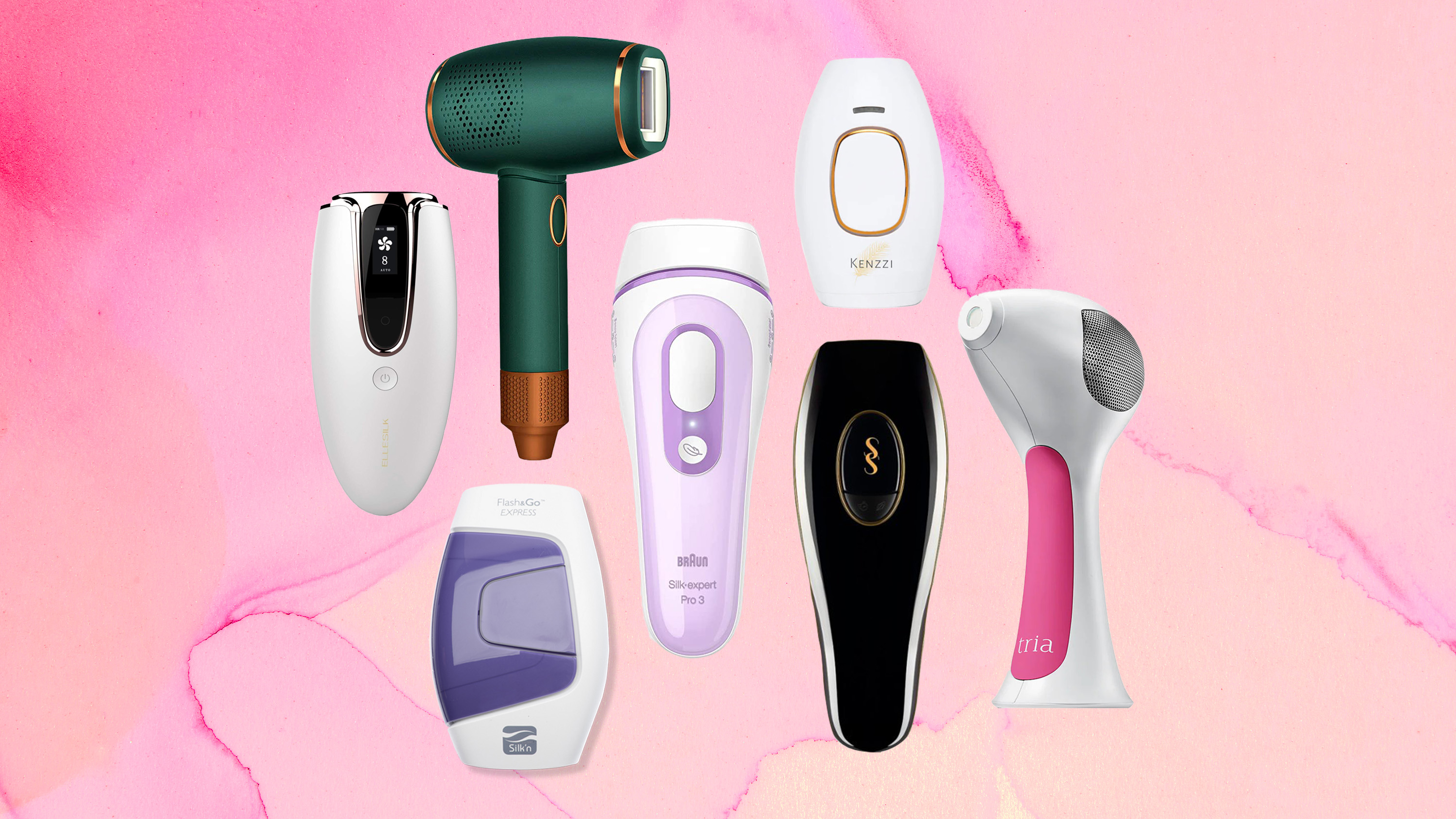

Buying Guides
What Type Of Laser Is Best For Hair Removal
Modified: September 23, 2023
Discover the best laser for hair removal for women. Find out which type of laser is most effective and provides long-lasting results.
(Many of the links in this article redirect to a specific reviewed product. Your purchase of these products through affiliate links helps to generate commission for Under-tec.com, at no extra cost. Learn more)
Table of Contents
What Type Of Laser Is Best For Hair Removal
When it comes to hair removal, laser treatment has become an increasingly popular choice for both men and women. Laser hair removal offers a long-lasting solution to unwanted hair, but not all lasers are created equal. Different types of lasers are used in hair removal treatments, and each has its own advantages and considerations. So, what type of laser is best for hair removal?
1. Alexandrite Laser: The Alexandrite laser is one of the most commonly used lasers for hair removal. It emits a concentrated beam of light that targets the pigment in the hair follicles. This laser is known for its speed and effectiveness, making it suitable for large treatment areas. However, it may not be the best option for those with darker skin tones as it has a higher risk of pigment changes.
2. Diode Laser: The Diode laser is another popular choice for hair removal. It delivers a longer wavelength of light that can effectively target the hair follicles while minimizing damage to the surrounding skin. This makes it a suitable option for a wide range of skin tones. The Diode laser also offers faster treatment times and can be used on larger areas of the body.
3. Nd:YAG Laser: The Nd:YAG laser is known for its versatility and safety. It can be used on all skin types, including darker skin tones, with minimal risk of side effects. This laser penetrates deeper into the skin, targeting the hair follicles while leaving the surrounding skin unharmed. The Nd:YAG laser is often the preferred choice for individuals with darker skin tones or a history of hyperpigmentation.
4. Ruby Laser: The Ruby laser was one of the first lasers used for hair removal. It emits a shorter wavelength of light, which targets the melanin in the hair follicles. While effective for lighter skin tones, the Ruby laser may not be suitable for those with darker skin or fine, light-colored hair.
Choosing the best laser for hair removal depends on various factors, including skin tone, hair color, and the area being treated. It is essential to consult with a licensed and experienced professional who can assess your individual needs and recommend the most suitable laser for you.
Factors to consider when choosing a laser include its effectiveness, safety profile, treatment time, and any potential side effects. It is also important to inquire about the qualifications and experience of the treatment provider to ensure optimal results.
In summary, the best laser for hair removal varies depending on individual factors such as skin type, hair color, and personal preference. Consulting with a qualified professional is crucial in determining the most suitable laser for your specific needs. By doing so, you can achieve effective and long-lasting results in your hair removal journey.
Introduction
Hair removal is a common concern for many individuals, and laser treatment has emerged as a popular solution. Laser hair removal offers a convenient and long-lasting way to get rid of unwanted hair, with minimal discomfort and excellent results. However, with various types of lasers available, it can be challenging to determine which one is the best for hair removal.
In this article, we will explore the different types of lasers used for hair removal and discuss their pros and cons. By understanding the characteristics and considerations of each laser, you can make an informed decision when seeking hair removal treatment.
Laser hair removal works by targeting the hair follicles with controlled pulses of light. The light emitted by the laser is absorbed by the pigment (melanin) in the hair follicles, heating them up and destroying their ability to produce hair. Over time, this leads to a significant reduction in hair growth.
While laser hair removal is effective for most people, the choice of laser can significantly impact the results and safety of the treatment. Various factors, such as skin tone, hair color, and treatment area, need to be considered when selecting the appropriate laser.
In the following sections, we will dive into the four main types of lasers used in hair removal: the Alexandrite laser, Diode laser, Nd:YAG laser, and Ruby laser. We will discuss their unique features, advantages, and limitations, as well as their suitability for different skin tones and hair types.
It’s essential to note that while lasers are generally safe and effective, it is crucial to undergo laser hair removal under the guidance of a qualified professional. A skilled practitioner will assess your individual needs and recommend the best laser for your unique situation.
Now, let’s explore the specific types of lasers used in hair removal and discover which one may be the best fit for you!
Understanding Laser Hair Removal
Laser hair removal is a cosmetic procedure that uses laser technology to permanently reduce hair growth. Unlike traditional methods like shaving, waxing, or plucking, which provide temporary results, laser hair removal offers a long-term solution by targeting the hair follicles directly.
The process of laser hair removal involves emitting a concentrated beam of light into the skin. The light is absorbed by the pigment in the hair follicles, leading to the destruction of the follicle itself. This prevents future hair growth, leaving the skin smooth and hair-free.
One of the key advantages of laser hair removal is its precision. The laser can selectively target dark, coarse hairs while leaving the surrounding skin undamaged. This makes it a suitable option for various areas of the body, including the face, legs, underarms, bikini line, and back.
It’s crucial to understand that laser hair removal is a process that requires multiple sessions to achieve optimal results. This is because hair grows in cycles, and the laser can only effectively target hairs in the active growth phase. Typically, multiple treatments are needed to target all the hairs in their active growth phase, ensuring long-lasting hair reduction.
The success of laser hair removal depends on various factors, including the individual’s skin tone, hair color, and hair thickness. The ideal candidate for laser hair removal has dark hair and fair to medium skin. This is because the laser targets the pigment in the hair follicles, and a greater contrast between the hair and skin color ensures better absorption of the laser energy.
While laser hair removal is generally safe, it’s essential to undergo the procedure under the supervision of a trained professional. An experienced practitioner will consider factors such as your skin type, medical history, and potential risks to determine the most suitable laser and settings for your treatment.
It’s important to note that laser hair removal may be less effective on light-colored hair, such as blond, gray, or red hair, as these may have less melanin and are more challenging for the laser to target. Additionally, individuals with darker skin tones may require specialized lasers that can bypass the melanin in the skin and focus on the hair follicles.
During the laser hair removal procedure, you may experience some mild discomfort, described by many patients as a slight stinging or snapping sensation. However, most people find it tolerable, and the discomfort can be minimized with cooling techniques or topical numbing creams.
Overall, laser hair removal offers a safe and effective way to achieve long-term hair reduction. Understanding the process and selecting the right laser for your specific needs are crucial steps in achieving the best results. Consult with a qualified professional to discuss your goals, assess your candidacy for laser hair removal, and start your journey to smooth, hair-free skin.
Different Types of Lasers for Hair Removal
When it comes to laser hair removal, various types of lasers are used, each with its own characteristics, advantages, and considerations. Understanding the differences between these lasers can help you make an informed decision when choosing the most suitable option for your hair removal needs.
1. Alexandrite Laser: The Alexandrite laser is one of the most widely used lasers for hair removal. It emits a specific wavelength of light that targets the melanin in the hair follicles. This laser is known for its speed and effectiveness, making it suitable for large treatment areas such as the legs, arms, and back. However, it may not be the best option for individuals with darker skin tones, as there is a higher risk of post-treatment hyperpigmentation.
2. Diode Laser: The Diode laser is another popular choice for hair removal. It uses a longer wavelength of light that can effectively penetrate the hair follicles while minimizing damage to the surrounding skin. The Diode laser is known for its versatility and can be used on a wide range of skin tones. It offers faster treatment times and can cover large areas, making it suitable for both small and large treatment areas.
3. Nd:YAG Laser: The Nd:YAG laser is considered one of the safest lasers for hair removal, making it suitable for all skin types, including darker skin tones. It emits a longer wavelength of light that can penetrate deeper into the skin, targeting the hair follicles while minimizing the risk of burns or pigment changes. The Nd:YAG laser is particularly useful for individuals with darker skin tones or a history of hyperpigmentation.
4. Ruby Laser: The Ruby laser was one of the first lasers used for hair removal. It emits a short wavelength of light that targets the melanin in the hair follicles. The Ruby laser is most effective for individuals with lighter skin tones and dark, coarse hair. However, it may not be as effective on finer hair or individuals with darker skin tones, as the laser may also target the melanin in the skin.
It’s important to note that the choice of laser for hair removal may vary depending on individual factors such as skin type, hair color, and the area being treated. Consulting with a qualified professional is crucial, as they can evaluate your specific needs and recommend the most appropriate laser for you.
During the consultation, be sure to discuss any concerns or questions you have regarding the different types of lasers. The practitioner will assess your skin type, hair color, and other factors to determine which laser will provide you with the best results while minimizing any risks or side effects.
Having accurate information about the different types of lasers used in hair removal will empower you to make an informed decision. It will also ensure that you receive the most effective and safe treatment possible. Remember, always consult with a licensed professional to guide you through the process and help you achieve your desired hair removal goals.
Alexandrite Laser
The Alexandrite laser is one of the most commonly used lasers for hair removal. It utilizes an Alexandrite crystal as the medium for producing the laser beam. This laser emits a specific wavelength of light (755 nm) that effectively targets the melanin in the hair follicles.
One of the key advantages of the Alexandrite laser is its speed. It has one of the fastest repetition rates among the different types of lasers, making it well-suited for large treatment areas such as the legs, arms, and back. The high-speed capability makes sessions quicker, resulting in shorter overall treatment times.
Additionally, the Alexandrite laser has been found to provide excellent hair reduction results. Its specific wavelength is highly absorbed by melanin, allowing for precise delivery of energy to the hair follicles. This targeted approach increases the effectiveness of the treatment, resulting in significant hair reduction over multiple sessions.
However, it’s important to note that the Alexandrite laser may not be suitable for all skin types. It is most effective on individuals with lighter skin tones and darker hair colors. This is because the laser targets the melanin pigment in the hair, and a higher contrast between the hair and skin color allows for better absorption of the laser energy.
Individuals with darker skin tones may have a higher risk of adverse effects such as burns, hyperpigmentation, or hypopigmentation when using the Alexandrite laser. It is crucial to consult with an experienced practitioner who can assess your skin type and hair color to determine if the Alexandrite laser is the best option for you.
When undergoing treatment with the Alexandrite laser, it is common to experience some mild discomfort, often described as a snapping sensation or rubber band snap. However, most individuals find the discomfort tolerable, and it can be minimized with cooling techniques or topical numbing creams.
Overall, the Alexandrite laser is a popular choice for hair removal due to its speed and effectiveness. If you have lighter skin tones and darker hair, this laser may provide you with excellent hair reduction results. However, it is crucial to consult with a qualified professional to assess your individual needs and ensure the Alexandrite laser is the optimal choice for your hair removal journey.
Diode Laser
The Diode laser is a commonly used type of laser for hair removal. It works by emitting a longer wavelength of light (typically around 800-810 nm) that is specifically absorbed by the melanin in the hair follicles.
One of the key advantages of the Diode laser is its versatility. This laser can be used on a wide range of skin tones, making it suitable for individuals with fair to medium skin tones. It is particularly effective on individuals with dark hair. The Diode laser’s ability to target the melanin in the hair follicles while minimizing damage to the surrounding skin makes it a popular choice for many patients.
Another benefit of the Diode laser is its larger spot size and faster repetition rate. This allows for quicker treatment times, making it particularly well-suited for larger treatment areas such as the back or legs. The larger spot size also enables more efficient and effective treatment, as it can cover a larger area of the skin with each laser pulse.
The Diode laser works by selectively heating the hair follicles, impairing their ability to grow hair over time. Multiple treatment sessions are required to target hair follicles in different stages of growth. This ensures that all hair follicles are adequately treated, leading to long-lasting hair reduction.
During a Diode laser hair removal session, individuals may experience mild discomfort, often described as a tingling or snapping sensation. However, this discomfort is usually well-tolerated and can be minimized with cooling techniques or topical numbing creams.
It’s important to note that while the Diode laser is effective for many individuals, it may not be the best choice for those with very light hair colors, such as blonde or gray. Since the Diode laser works by targeting melanin, it requires a contrast between the hair and skin for optimal results. Additionally, individuals with darker skin tones may require specific settings and protocols to avoid adverse effects.
Consulting with a qualified professional is crucial when considering the Diode laser for hair removal. They can assess your skin type, hair color, and specific needs to determine if the Diode laser is the most suitable option for you. They will also advise you on the number of sessions and any pre- and post-treatment recommendations.
In summary, the Diode laser offers versatility, faster treatment times, and effective hair reduction for individuals with fair to medium skin tones and dark hair colors. Taking into consideration your skin type and hair color, consulting with a qualified professional will ensure that you receive the best possible treatment plan and achieve your desired hair removal goals with the Diode laser.
Nd:YAG Laser
The Nd:YAG laser is a versatile type of laser widely used for hair removal. It emits a longer wavelength of light (typically between 1064 and 1066 nm) that can penetrate deeper into the skin, making it suitable for individuals with various skin tones, including darker or tanned skin.
One of the key advantages of the Nd:YAG laser is its ability to bypass the melanin in the skin and target the melanin in the hair follicles. This reduces the risk of potential damage to the surrounding skin and minimizes the chances of hyperpigmentation or burns. The Nd:YAG laser is considered one of the safest options for hair removal, especially for individuals with darker skin tones or a history of hyperpigmentation.
Another benefit of the Nd:YAG laser is its ability to target deep-rooted hair follicles. This makes it a suitable choice for individuals with coarser or thicker hair. The laser can penetrate deeper into the skin, effectively targeting the hair follicles and providing long-term hair reduction.
The Nd:YAG laser also offers the advantage of being less affected by the presence of melanin in the skin. This means that it can be used on tanned or darker skin tones, where other lasers may pose a higher risk of adverse effects. The laser’s ability to bypass the melanin in the skin allows for safer and more effective treatment for individuals with a range of skin tones.
During an Nd:YAG laser hair removal session, individuals may experience minimal discomfort, often described as a warming or snapping sensation. Most people find the procedure tolerable, but cooling techniques or topical numbing creams can be used to enhance comfort during the treatment.
It’s important to note that while the Nd:YAG laser provides excellent results for many individuals, it may not be as effective for individuals with fine or light-colored hair. This is because the Nd:YAG laser primarily targets the melanin in the hair follicles, and hair with less melanin may not be as responsive to the treatment.
Consulting with a qualified professional is essential to determine if the Nd:YAG laser is the best option for your hair removal needs. They can assess your skin type, hair color, and specific concerns and develop a customized treatment plan to achieve optimal results. They may also provide guidance on any pre- or post-treatment instructions to ensure the best outcomes.
In summary, the Nd:YAG laser is a safe and versatile option for hair removal, suitable for individuals with various skin tones and hair types. With its ability to bypass melanin in the skin and target deep-rooted hair follicles, the Nd:YAG laser offers effective and long-lasting hair reduction. Consult with a qualified professional to determine if the Nd:YAG laser is the right choice for your hair removal journey.
Ruby Laser
The Ruby laser was one of the first lasers used for hair removal. It emits a short wavelength of light (694 nm) that specifically targets the melanin pigment in the hair follicles.
The Ruby laser is particularly effective for individuals with fair skin tones and dark, coarse hair. The short wavelength allows for precise targeting of the melanin in the hair follicles, leading to significant hair reduction over multiple treatment sessions.
One of the advantages of the Ruby laser is its ability to deliver high energy to the targeted hair follicles, which can result in excellent hair reduction results. It is often used on smaller treatment areas, such as the upper lip or underarms, where the skin is more delicate and requires precision.
However, it’s important to note that the Ruby laser may not be as effective for individuals with lighter hair colors, such as blond, gray, or red hair. This is because these hair colors have less melanin, making it more challenging for the laser to target and destroy the hair follicles effectively.
Additionally, the Ruby laser may not be suitable for individuals with darker skin tones. The laser’s specific wavelength targets melanin, which can also be present in the skin. Darker skin tones have a higher concentration of melanin, increasing the risk of unwanted side effects such as burns or hyperpigmentation.
During a Ruby laser hair removal session, individuals may experience some mild discomfort, often described as a warm and snapping sensation. While discomfort varies from person to person, it is usually well-tolerated, and the use of cooling techniques can help minimize any discomfort.
Consulting with a qualified professional is crucial when considering the Ruby laser for hair removal. They can evaluate your skin type, hair color, and specific needs to determine if the Ruby laser is the most suitable option for you. They will also help you understand the expected number of treatment sessions and any necessary pre- or post-treatment care.
In summary, the Ruby laser is a highly effective option for individuals with fair skin tones and dark, coarse hair. With its short wavelength, it provides precise targeting of the hair follicles, resulting in significant hair reduction. However, it may be less effective for lighter hair colors and may not be suitable for individuals with darker skin tones. Consulting with a qualified professional is essential to assess your individual needs and ensure the Ruby laser is the best choice for your hair removal journey.
Choosing the Best Laser for Hair Removal
Choosing the best laser for hair removal is crucial in achieving optimal results and ensuring the safety and effectiveness of the treatment. With several types of lasers available, it’s important to consider various factors to determine which laser is most suitable for your specific needs.
1. Skin Type: Your skin type plays a significant role in laser selection. Different lasers have specific wavelengths that target the melanin in the hair follicles. Some lasers are more effective for individuals with fair to medium skin tones, while others are safe and suitable for darker skin tones. Consult with a qualified professional who can assess your skin type and recommend the most appropriate laser for you.
2. Hair Color: The color of your hair is another important factor to consider. Lighter hair colors, such as blond, gray, or red, may be less responsive to certain lasers that primarily target melanin. However, some lasers specifically target lighter hair colors. Understanding the compatibility between your hair color and the laser’s capabilities is crucial in selecting the best laser for hair removal.
3. Treatment Area: The area of the body being treated is also a consideration. Certain lasers are suitable for larger treatment areas, such as the legs or back, while others are more precise and designed for smaller areas like the face or bikini line. Ensure that the laser you choose is appropriate for the size and location of the area you wish to treat.
4. Treatment Goals: Clearly defining your treatment goals is essential in laser selection. Are you looking for permanent hair removal or just hair reduction? Different lasers have different efficacy levels when it comes to achieving long-lasting results. Discuss your goals with a professional who can recommend the most appropriate laser for your desired outcome.
5. Safety and Side Effects: Consider the safety profile of the laser and any potential side effects. Some lasers have a higher risk of adverse effects on certain skin types or may require specific precautions to avoid complications. Prioritize your safety by seeking treatment from a licensed and experienced professional who can guide you through the process and minimize any potential risks.
During a consultation with a professional, they will assess your individual needs, including your skin type, hair color, treatment area, and goals. They will take into account all these factors and recommend the most suitable laser for your hair removal journey.
Finally, it’s important to note that the success of laser hair removal is not solely dependent on the type of laser used but also on the expertise of the practitioner. Choosing a qualified and experienced professional is essential in achieving the best outcomes, regardless of the laser system being used.
By considering these factors and consulting with a knowledgeable professional, you can make an informed decision and choose the best laser for your hair removal needs. Begin your hair removal journey with confidence, knowing that you have selected the most suitable laser for effective, safe, and long-lasting results.
Factors to Consider When Choosing a Laser
When selecting a laser for hair removal, it’s important to consider several key factors to ensure the best results and a safe treatment experience. The following are important considerations to keep in mind when choosing a laser:
1. Skin Type and Hair Color: Different lasers target the melanin pigment in the hair follicles, so it’s crucial to consider your skin type and hair color. Some lasers are more effective for individuals with fair to medium skin tones and dark hair, while others are suitable for a broader range of skin tones and hair colors. Ensure that the laser you choose is compatible with your specific skin and hair characteristics.
2. Treatment Area: The size and location of the treatment area should be taken into account. Some lasers are designed for larger treatment areas, such as the legs or back, while others are more suitable for smaller areas like the face or bikini line. Evaluate the laser’s spot size and versatility in targeting the specific areas you wish to treat.
3. Treatment Goals: Clarify your treatment goals with the practitioner. Are you looking for permanent hair removal or hair reduction? Different lasers have varying efficacy levels, and some may provide more long-lasting results than others. Communicate your expectations and desired outcomes to ensure that the chosen laser can meet your goals effectively.
4. Safety and Side Effects: Consider the safety profile of the laser and any potential side effects. Certain lasers may carry a higher risk of complications for specific skin types or require additional precautions. An experienced practitioner will assess your medical history, skin sensitivity, and potential risks to ensure your safety. Be sure to ask about any potential side effects and how they can be minimized.
5. Treatment Provider’s Expertise: The expertise and qualifications of the treatment provider are paramount. Seek treatment from a licensed and experienced professional who specializes in laser hair removal. They should have thorough knowledge of different laser systems, understand your unique needs, and be skilled in adjusting laser settings to optimize efficacy and safety.
6. Cost and Accessibility: Consider the cost of the treatment and the accessibility of the chosen laser. Laser hair removal typically requires multiple sessions for optimal results, so it’s essential to factor in the overall cost and ensure it aligns with your budget. Additionally, verify that the chosen laser is available at a reputable clinic or spa within a reasonable distance.
7. Consultation and Test Patch: Prioritize scheduling a consultation with the treatment provider before proceeding with the laser hair removal treatment. The consultation allows the practitioner to evaluate your skin and hair characteristics, discuss your goals and concerns, and recommend the most suitable laser for your needs. It is also advisable to undergo a test patch to assess your skin’s reaction and determine the appropriate laser settings.
Considering these factors when choosing a laser for hair removal will greatly increase the likelihood of achieving safe, effective, and satisfactory results. Remember, the expertise of the practitioner and your open communication about your expectations are crucial throughout the process to ensure a successful hair removal experience.
Conclusion
When it comes to finding the best laser for hair removal, several factors come into play. Understanding your skin type, hair color, treatment goals, and safety considerations are essential in making an informed decision. While each type of laser comes with its own advantages and considerations, it’s crucial to consult with a qualified professional who can assess your individual needs and recommend the most suitable laser for you.
The Alexandrite laser is known for its speed and effectiveness, making it suitable for larger treatment areas. The Diode laser offers versatility and faster treatment times, making it well-suited for a wide range of skin tones. The Nd:YAG laser is versatile and safe for all skin types, including darker skin tones. The Ruby laser can be effective for fair skin tones and dark, coarse hair.
Factors such as skin type, hair color, treatment areas, and desired outcomes should be carefully considered when choosing a laser. Additionally, ensuring the expertise and qualifications of the treatment provider, taking into account safety and potential side effects, and considering the cost and accessibility are all important aspects of the decision-making process.
By taking the time to thoroughly evaluate these factors and consulting with a knowledgeable professional, you can select the best laser for your hair removal journey. Remember that laser hair removal is a process that requires multiple sessions for optimal results, and individual experiences may vary. Open communication with your treatment provider and following their guidance will help maximize the effectiveness and safety of the treatment.
Ultimately, the best laser for hair removal is the one that aligns with your unique needs and ensures optimal results. With the right laser and the expertise of a skilled professional, you can embark on your hair removal journey with confidence, knowing that you are well on your way to achieving smooth, hair-free skin.


